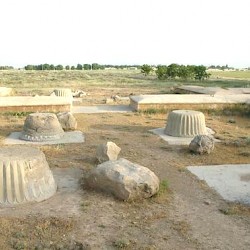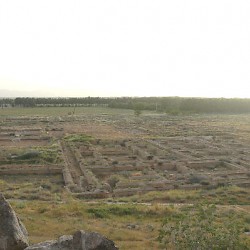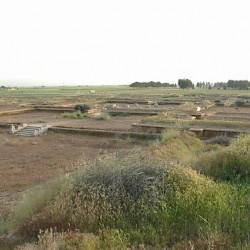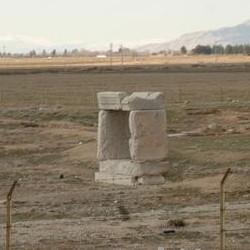Persepolis, Lower City
Persepolis (Old Persian Pârsa, modern Takht-e Jamshid): Greek name of one of the capitals of the ancient Achaemenid Empire, founded by king Darius the Great (r.522-486 BCE). There were several satellite sites, Naqš-e Rustam and Takht-e Rustam.
Lower City
Surrounding the Terrace of Persepolis to the south, west, and northwest was the Lower City. It is certain that there were people living over here before Darius I the Great started to build the palace, but unfortunately, hardly anything has been excavated, and what was excavated is still partly unpublished.
The first photo shows a structure that appears to be a gate. The second photos shows several large, regularly built buildings that can be seen from the Tomb of Artaxerxes II Mnemon. They are only some 300 meters south of the terrace, but remain poorly understood, even though they are closer to the palaces than, for example, a "real royal monument" like the Unfinished tomb. The structure to the right may have been used as storage rooms.
 Persepolis, Lower City, Gate |
 Lower City, seen from the tomb of Artaxerxes II |
 Persepolis, Lower City, Mansion |
 Persepolis, Lower City, Unidentified structure |
The third photo shows one of the largest mansions: in front a square court, separated from the main residence by small stairs, and a second part, consisting of several rooms surrounding a central hall. The royal palaces had a similar design. Owners of these houses must have been very wealthy people, perhaps even princes belonging to the highest Achaemenid elite. This part of the city, which was really large, was looted by the Macedonians of Alexander the Great in 330 BCE, prior to the fire in the palaces. However, the Lower City appears to have remained inhabited.
So far, the photos were from the southern part of the Lower City. The western part cannot be recovered, because Mohammad Reza Shah build a park on it, where he accommodated his royal guests when he wanted to celebrate the 2,500 year jubilee of the Iranian monarchy. To the north of the Terrace, however, was the small structure shown on the fourth photo. Its function is not well understood.